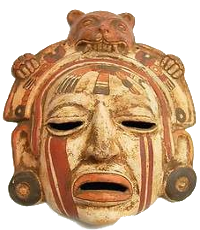Kingdom of Hawai’i
Before it was occupied by the United States in 1893, Hawai’i was a sovereign country with it own royal house, foreign policy, bank notes and stamps. In fact, it had been recognized as independent by Europeans countries for close to one hundred years. The last ruler of independent Hawai’i was a woman, queen Liliʻuokalani, 1838-1917. She was an accomplished author and the composer of “Aloha ‘Oe,” the most famous of all Hawai’ian songs. She represented her country at Queen Victoria’s Golden Jubilee in London in 1887. Queen Liliʻuokalani is still revered by indigenous Hawaiians.
By the 1890s, the European occupation of all of North America was secure and the U.S. government continued its expansion across the Pacific. In 1893, the Americans organized an uprising among the locals in Hawaii. In 1898, they proceeded to annex the islands, the same year that they occupied the Philippines. The Hawaiian flag was lowered at the royal palace in Honolulu and the U.S. flag was raised. Hawai’i became a U.S. state in 1959, following a referendum in which 93% of voters approved of statehood. As a result, the islands were removed from the United Nations’ list of territories subject to decolonization. In 1993, the U.S. Congress issued an apology in which they admitted that “the overthrow of the Kingdom of Hawai’i occurred with the active participation of agents and citizens of the United States” and that “the Native Hawai’ian people never directly relinquished to the United States their claims to their inherent sovereignty as a people over their national lands.”
There are today some 150,00 Hawai’ians of pure indigenous ancestry and another 400,00 people who claim partial indigenous ancestry. Together they constitute about a third of the population of the islands. Native Hawaiians are over-represented among the homeless and unemployed. Although there is an active independence movement, it has only limited support. A more poplar proposal is that the islands should be given a semi-sovereign status within the United States and that native Hawai’ians should be recognized as an indigenous American tribe. Queen Liliʻuokalani still has descendants who claim a right to the vacant throne. There are today some 42,000 U.S. soldiers stationed on the islands.
External links:
- Daughters of the Goddess, “Kingdom of Hawaii”
- Dead country stamps and bank notes
- Hawaiian banknotes
- Hawaiian stamps
- Kingdom of Hawai’i
- Monarchy in Hawai’i
- President’s message relating to the Hawaiian Islands. December 18, 1893
- The Ancestors of King Kamehameha the Great
- The Hawaiian kingdom, vol. 1, 1778-1854, foundation and transformation
- Ulukau
- University of Hawai’i, “The Annexation Of Hawaii: A Collection Of Documents”
- YouTube, HM Queen Liliʻuokalani, “The Queen’s Jubilee”
- YouTube: HM Queen Lili’uokalani, “Aloha’Oe”

